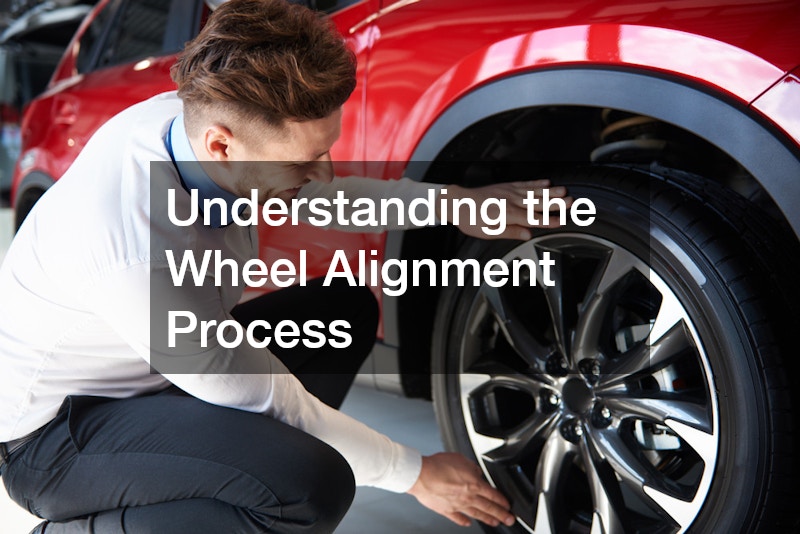Maintaining your vehicle is essential for optimal performance, safety, and longevity. One crucial aspect of vehicle maintenance that often goes overlooked is wheel alignment. Proper wheel alignment ensures that your tires wear evenly, improves fuel efficiency, and enhances your vehicle’s handling.
Understanding the alignment process can help you recognize when it’s necessary and what to expect during the service. Here’s a detailed look at the wheel alignment process.
Wheel alignment refers to the adjustment of a vehicle’s suspension system, which connects the wheels to the vehicle. It involves setting the angles of the wheels to the manufacturer’s specifications, ensuring that all four wheels point in the same direction. This process is vital because misaligned wheels can lead to uneven tire wear, decreased fuel efficiency, and compromised handling. If you notice your vehicle pulling to one side or if the steering wheel is off-center, it may be time for an alignment.
The first step in the alignment process is a thorough inspection of the vehicle. A qualified technician will examine the suspension components, including the tie rods, control arms, and bushings, to identify any wear or damage. This inspection is crucial because damaged parts can affect alignment and lead to more serious issues if not addressed. If any components are found to be worn out or broken, they should be replaced before proceeding with the alignment.
Once the inspection is complete, the technician will assess the current alignment angles of your vehicle. There are three primary angles that are adjusted during a wheel alignment: camber, toe, and caster. Camber refers to the tilt of the wheels when viewed from the front of the vehicle. If the wheels lean in or out at the top, it can lead to uneven tire wear. Toe is the angle at which the tires point in relation to the centerline of the vehicle; it can be “toed-in” or “toed-out.” Lastly, caster refers to the angle of the steering pivot when viewed from the side of the vehicle, affecting steering stability. Understanding these angles helps you grasp the importance of proper alignment.
After the technician has assessed the alignment angles, they will make the necessary adjustments. Most modern vehicles are equipped with computerized alignment systems that allow for precise adjustments to be made quickly and efficiently. The technician will use specialized equipment to measure the alignment angles and make adjustments as needed. This may involve loosening bolts, repositioning components, and tightening everything back into place to ensure accuracy. This process typically takes about an hour, but it can vary based on the vehicle and the extent of the adjustments needed.
Once the adjustments are complete, the technician will recheck the alignment angles to ensure they meet the manufacturer’s specifications. This step is crucial, as it confirms that the alignment has been restored to optimal levels. Proper alignment can improve your vehicle’s handling, enhance tire longevity, and provide a smoother ride. If the alignment is within specifications, the technician will provide you with a printout of the before-and-after measurements, giving you peace of mind that the service was completed correctly.
While wheel alignment is essential for vehicle maintenance, it’s also important to understand how often it should be performed. Most experts recommend having your alignment checked every 6,000 to 10,000 miles, or at least once a year. Additionally, it’s wise to have your alignment checked whenever you notice signs of misalignment, such as uneven tire wear, your vehicle pulling to one side, or if you’ve recently had suspension work done. Keeping up with regular alignment checks can help prevent more significant issues down the road.
At the end of the day, understanding the alignment process is vital for maintaining your vehicle’s performance and safety. By recognizing the signs that indicate a need for alignment, knowing the key angles involved, and understanding what happens during the service, you can make informed decisions about your vehicle’s care. Regular wheel alignments not only enhance your driving experience but also prolong the life of your tires and improve fuel efficiency. If you’re unsure whether your vehicle needs an alignment, don’t hesitate to consult a qualified technician for advice. By prioritizing proper wheel alignment, you can enjoy a safer, more comfortable ride for years to come.
.
